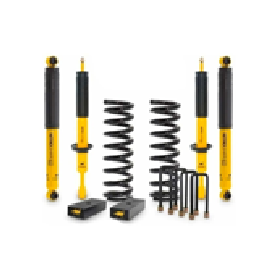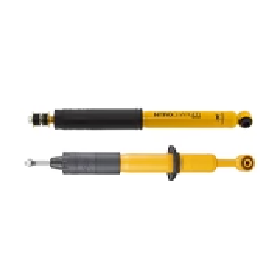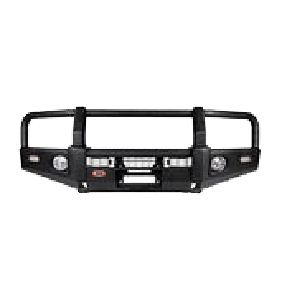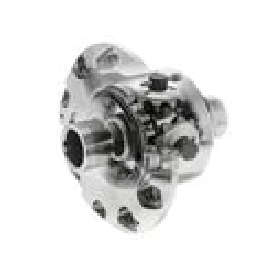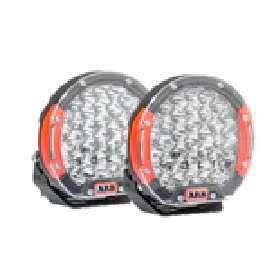Should I get Upper Control Arms (UCAs)?
When you lift your truck, you might ask yourself if aftermarket Upper Control Arms are necessary. The answer depends on how high you lift:



Depending on your lift, upgrading your UCAs could be crucial for keeping your truck running smoothly and safely. So let’s dive into the details.
In this article:
What is an Upper Control Arm?
Upper Control Arms are key components of a vehicle’s suspension system. They connect the vehicle’s chassis to the wheel assembly and play an important role in controlling wheel alignment and travel (articulation).
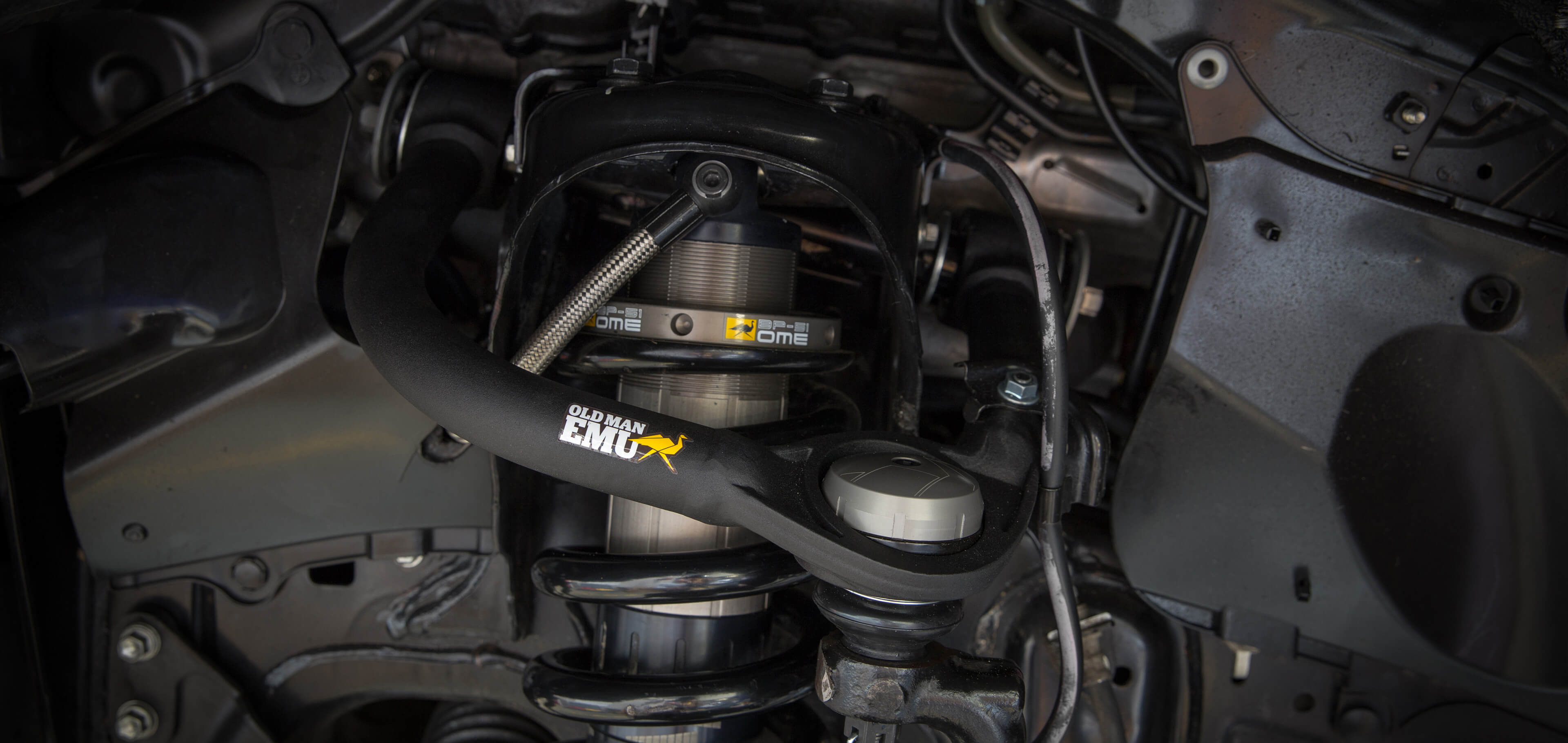
What happens to your factory UCAs when you lift your ride?
When you lift your vehicle, factory UCAs can face several issues due to the changes in suspension geometry. Depending on the car and on the lift, you may run into trouble with:
Alignment
Once you’ve lifted your vehicle (depending on the height), factory UCAs might not be able to adjust the camber (wheel tilt) and caster (steering stability) correctly.
This can cause uneven tire wear and problems with handling.


Strut Clearance
Factory Upper Control Arms often don’t provide enough clearance with the strut when using aftermarket lift kits. This can lead to the UCAs hitting the strut, causing noise, potential damage, and affecting suspension performance.

Tire Clearance
Factory UCAs can limit tire clearance, especially with larger tires. Without enough adjustment for the caster, the tire might rub against the back of the fender well.

Heavy Offroading Stress
When you push your vehicle through rough terrain, factory UCAs may not handle the increased loads and impacts well, leading to premature wear or even failure.

Why Aftermarket UCAs?
Upgrading to aftermarket UCAs after a lift can enhance several aspects of your driving experience:
Adjustable or not, aftermarket UCAs are designed to enhance alignment. Adjustable UCAs allow for precise adjustments to camber and caster angles, while non-adjustable ones come with preset settings. This ensures that even with a lifted vehicle, your wheels remain properly aligned.
When fitting larger tires, aftermarket UCAs help prevent clearance issues by allowing you to adjust caster angles, so your tires won’t rub against the fender well.
The “U” in the UCA is designed to be larger, creating extra space to prevent contact with the strut and ensure smoother performance.
Enhanced durability comes from the robust construction and high-quality materials used in aftermarket UCAs, making them more reliable for tough conditions and for heavy loads.
Aftermarket UCAs increase the range of motion in your suspension, allowing your wheels to move more freely, increasing traction, performance and safety off-road — but a picture speaks louder than words.
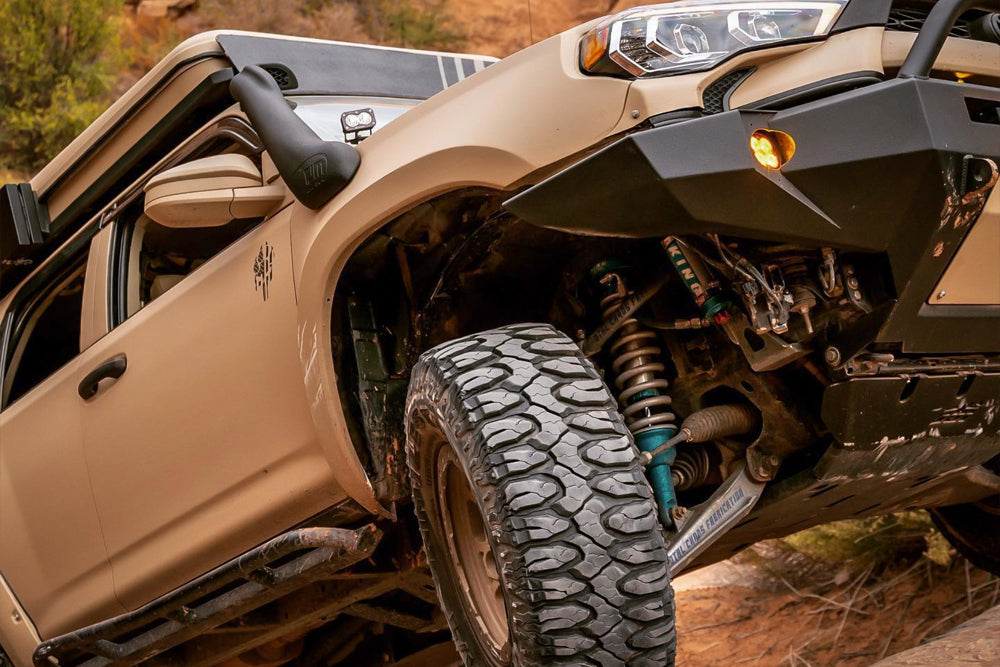
How to choose the right UCAs for your vehicle?
Several important factors must be considered when choosing Aftermarket Upper Control Arms. Let's break down some of the key points to help you make the best choice:
BALL JOINT TYPE
A ball joint connects the Upper Control Arms (UCAs) to the steering knuckles. It consists of a metal ball inside a socket, which helps the suspension move smoothly, allows the wheels to move up and down, and pivots for steering, providing stability and flexibility.

There are 3 main options:
• Uniball/Heim: Uses a spherical bearing to provide more articulation and strength, offering a wider range of movement and enhanced durability in extreme conditions. It requires frequent maintenance to ensure optimal performance.
Why choose this option? For extra Strength, better articulation, and flexibility!
• Greasable Ball Joint: This joint allows for regular lubrication through a grease fitting. It requires less maintenance than a Uniball and lets you use the lubricant of your choice for peace of mind, but it offers less articulation. Also, it’s often more affordable than uniballs.
Why choose this option? For its cost-effectiveness and durability.
• Sealed Ball Joint: This joint features a closed design with a seal to protect the internal lubricant from contaminants. It offers less articulation but enhanced strength and requires little to no maintenance.
Why choose this option? For its low maintenance needs.
MATERIAL
UCAs can be made from different materials, including steel and billet aluminum. Each material has its own characteristics that influence the overall performance and suitability for your driving needs. There are three key materials used.

Billet Aluminum
• Weight: It is very lightweight, which enhances maneuverability and fuel economy. It is ideal for those seeking agile performance without adding extra weight to the vehicle.
• Resistance: It offers good resistance but may not be as robust as other materials under extreme conditions. It is suitable for uses that don't involve severe loads or impacts.
Why choose this option? For those who prioritize agility and fuel efficiency.
Tubular Steel
• Weight: Moderate, providing a balance between weight and strength. Lighter than forged steel but sturdier than aluminum.
• Resistance: Offers good resistance, especially in off-road applications. The tubular construction maintains strength without the excess weight of solid steel.
Why choose this option? For a balanced approach to weight and strength, ideal for versatile off-road use.
Forged Steel
• Weight: It is generally heavier than other materials, which can affect fuel economy but provides superior stability. The added mass contributes to greater impact resistance.
• Resistance: It is extremely durable and strong, ideal for severe driving conditions and off-road use. It effectively withstands heavy loads and wear.
Why choose this option? For maximum durability and strength in the most demanding conditions.
ADJUSTMENT CAPABILITY
This refers to the UCAs' ability to be fine-tuned for alignment and suspension settings to fit your vehicle's specific needs.

In general, there are two types of adjustment capabilities to choose from:
Fixed (Non-Adjustable):
• Fitment: It’s designed to fit precisely and align with specific vehicle models or lift kits. This ensures stable performance and reliable fitment for particular vehicles.
• Articulation: Offers a preset range of motion, providing sufficient flexibility for many off-road conditions.
Why choose this option? For consistent performance with a set range of motion and precise fitment.
Adjustable
• Fitment: It can be adjusted to accommodate changes in suspension geometry, allowing for customization to suit different setups.
• Articulation: Allows you to adjust the angle and positioning, providing a greater range of motion and better wheel contact on uneven terrain.
Why choose this option? For customized articulation and alignment that best suits your specific needs.
BUSHING TYPE
A bushing is a component that acts as a cushion between the UCAs and the vehicle's frame. Its main role is to absorb vibrations, reduce noise, and allow for smooth movement.

They come in different materials, including:
Metal
• Noise: Tends to be noisier as they do not absorb vibrations well.
• Durability: Very sturdy and can handle rough conditions. They last long but require regular maintenance.
• Articulation: This type provides the highest level of articulation, making it ideal for extreme off-road conditions where maximum flexibility is needed.
Why choose this option? For maximum articulation and durability in extreme off-road conditions.
Polyurethane
• Noise: It provides a balance between noise reduction and performance. It is less noisy than metal but not as quiet as rubber.
• Durability: Resists degradation from oil and chemicals, offering a longer lifespan under normal driving conditions.
• Articulation: Offers improved articulation compared to rubber, providing a good balance between flexibility and durability.
Why choose this option? For a good balance of durability and articulation, with moderate noise reduction.
Rubber
• Noise: Excellent at reducing noise and vibrations, making for a quieter ride.
• Durability: Good for everyday driving and moderate off-road use. However, they tend to wear out faster, especially under extreme conditions.
• Articulation: Typically offers less articulation, which can limit the UCA's movement and flexibility.
Why choose this option? For a quieter ride and effective noise reduction.
JOINT ARTICULATION
Joint articulation refers to how much movement the joint in an aftermarket Upper Control Arm can handle. Generally, the standard articulation is about 68°. The amount of articulation you achieve depends on the several factors we've discussed.
Why is this important? Aftermarket UCAs can have more or less articulation than standard. Those with more articulation reduce stress on the ball joint and increase wheel travel, allowing your vehicle to handle uneven terrain more effectively and smoothly.
Who makes the best Upper Control Arms?
Brand & UCA | Material | Adjustable | Ball Joint Type | Bushings | Joint Articulation | Price |
 | Aluminum | | Uniball | Metal (Spherical Bearing) | 74 | $1,649.99 |
 | Aluminum | | Ball Joint (Delta Joint) Sealed | Metal (Spherical Bearing) | 75 | $1,429.95 |
 | Steel Tubular | | Uniball | Polyurethane | 74 | $1,079 |
 | Steel Tubular | | Uniball | Polyurethane | 76 | $408.95 |
 | Steel Tubular | | Ball Joint (Delta Joint) Sealed | Polyurethane | 74 | $849 |
 | Steel Tubular | | Ball Joint / Greasable | Polyurethane | 75 | $713 |
 | Steel Tubular | | Ball Joint / Greasable | Polyurethane | 76 | $329 |
 | Steel Tubular | | Ball Joint / Greasable | Rubber | 76 | $649.95 |
 | Aluminum | | Ball Joint / Sealed | Rubber | 76 | $1,195 |
 | Aluminum | | Ball Joint / Sealed | Rubber | - | $820 |
 | Steel Forged | | Ball Joint / Sealed | Rubber Spherical | 80 | $695.95 |
 | Steel Tubular | | Ball Joint / Sealed | Rubber | 76 | $795 |
 | Steel Tubular | | Ball Joint / Sealed | Rubber | - | $549.95 |
 | Steel Tubular | | Ball Joint / Sealed | Rubber | - | $390 |
Are Upper Control Arms worth it?
So, are Upper Control Arms really worth the investment? The benefits offered by aftermarket UCAs are clear. Beyond simply addressing alignment issues, these components enhance articulation, durability, and overall performance, making them a wise choice.
But in the end, whether aftermarket UCAs are a smart choice depends on how much you lift your vehicle.
• For lifts less than 2 Inches, they’re optional.
• For lifts up to 2 inches, they’re a performance upgrade you might consider.
• For lifts over 2.5+ inches, they’re strongly recommended for both performance and safety.

In short, aftermarket UCAs can be a valuable investment. Just make sure to choose the right ones based on your lift height and how you plan to use your vehicle. There isn’t a one-size-fits-all answer when it comes to UCAs. Whether you’re looking for durability, flexibility, or a balance between performance and maintenance, there’s an option out there for you. Find the Upper Control Arms that suit your needs and enjoy a smoother, safer ride!
FAQs
What’s the difference between Upper Control Arms and Lower Control Arms?
Upper Control Arms and Lower Control Arms (LCAs) have different roles in a vehicle's suspension system. UCAs, located at the top, help with wheel alignment and control the camber angle. They are lighter and handle less weight. LCAs, found at the bottom, support the vehicle’s weight and absorb impacts from the road. They are stronger and built to handle more stress. Both control arms work together to ensure stability and control.
How long do Aftermarket Upper Control Arms last?
Aftermarket Upper Control Arms can last significantly longer than OEM ones, especially as they're made from stronger materials like high-strength steel or forged aluminum. Their durability depends on proper maintenance and usage conditions. In general, they can last for many years if installed correctly and maintained properly.
When should I replace the Upper Control Arms?
You should replace Upper Control Arms if you notice excessive wear, persistent alignment issues, unusual noises, or vibrations from the front of the vehicle. Check for visible damage like broken bushings or significant corrosion. Regular maintenance and timely replacement are key to ensuring optimal vehicle performance and safety, especially for off-road use.
How much do Upper Control Arms cost?
When it comes to aftermarket Upper Control Arms, prices can vary significantly. Options range from approximately $350 to around $1500, allowing you to choose based on your specific needs and budget.
Yes, you generally need a wheel alignment after replacing the Upper Control Arms. Since changing these components can affect the angles and positioning of your wheels, aligning them afterward is essential to ensure proper handling and optimal vehicle performance.
Is it easy to replace Upper Control Arms?
Replacing Upper Control Arms is usually simple and can be done with basic mechanic tools. You’ll need to disconnect the UCA from the knuckle and frame mounts, and then reconnect them. However, if you’re not very experienced with mechanics, it’s best to consult a professional. For a detailed step-by-step guide on how to replace Upper Control Arms, check it out here.
